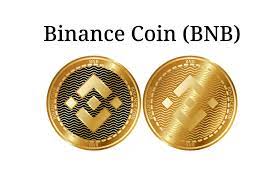Binance Coin in the cryptographic world, 2021 has been an impressive year. So far, more than 900% of this has come into play.

The continuous congestion in the Ethereum network has been one of the main drivers of BNB’s growth. Binance Smart Chain (BSC) has become an alternative as this fight continues to meet the rapidly growing demands of the DeFI sector.
BNB has overtaken traditional banks, including Santander, Bank of Montreal and UBS, as it reached $64 billion in market capitalisation. Some analysts, meanwhile, point to Coinbase’s estimated direct listing value as a catalyst for the BNB price rise ($100 billion valuation).
The fact that the direct listing of COIN adds value to centralized exchange token is common in the last couple of weeks. Analysts also speculate that other regulated exchanges like Kraken and Gemini from the US would probably follow the path of Coinbase and try to raise funds via an offering on stocks.
To understand the potential of BNB, the difference between equities must first be understood (stocks). After this has been cleared, the possible drivers of BNB appreciation can be analyzed.
BNB does not represent shares of Binance
BNB token offers trading fee discounts to holders and tokens for those who want to participate in the sale of Binance Launchpad are required. With BNB becoming liquid, it became a founding pair on the Binance exchange for other cryptocurrencies.
Over time, the Binance Smart Chain gained traction and other uses developed. For example, BNB may cover NET fees, which include decentralized apps and games, and act as a utility token in the ecosystem.
Regarding the total trading volume, Binance periodically burns (destroys) some of the non-circulating BNB tokens.The effectiveness of this strategy disappeared over time when investors realized that these destroyed toks never came into circulation.
The Binance Smart Chain Network uses a Stakeholder Proof Authority to eliminate miners or costly transaction fees. The platform has maintained a similar structure and smart contract compatibility with the Ethereum virtual machine (EVM).
In the Binance networks many tokenized (or pegged) cryptocurrencies gain relevance and allow users to circumvent mineral charges.Another advantage of the BEP-20 model of Binance Smart Chain is its extensive network of decentralized applications including the PancakeSwap DEX and Venus loan platforme, providing staking and farming capabilities.
As shown above, in terms of total locked value, Binance Smart Chain has gained ground in other DeFi protocols. Therefore, new usage cases were developed for the BNB token, which focused on agriculture, liquidity pools and base couples throughout the network.
Banks are reliable dividend providers, but DeFi could overtake the system
Shareholders shall have the right to net profits of a part of a coded corporation. That amount varies from quarter to quarter, because the board of directors can choose to repay debt or include some of it in reserves. Banks are however known to be money cows and therefore usually a reliable source of payments in respect of dividends.
Dividends from Santander (SAN) have divided by 3.7% in the past 12 months and shareholders of the Bank of Montreal (BMA) have received a similar return on current stock price returns. The Swiss UBS yield fell by 2020, but it averaged 5 percent historically.
In shareholders meetings, bank shareholders effectively have voting rights, and minority groups could block financially harmful measures. These shareholders, on the other hand, rely fully on the net income and growth of the bank.
BNB, however, could survive without Binance exchange’s direct influence. In future, the ecosystem may continue to thrive if the Binance Smart Chain manages to reach independent developers and validators. In theory, the ecosystem becomes less centralized if token loses its dependence.
If correctly done, BNB could surpass the traditional banking system’s market capitalization, but before this can occur, these networks and decentralized apps have to gain approval and be shown that they can meet the needs of mainstream investors and bank customers.
